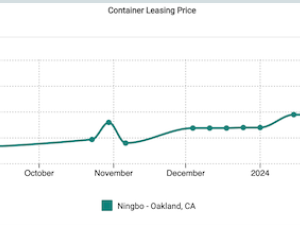During ceremonies held at the Tampa Port Authority Cruise Terminal on Channelside Drive, Jane Collar, wife of Steve Collar, senior vice president and general manager, technical services, christened the Courage, while Kim Michel Case, wife of Tracy Case, Terminals, Transport and Marine manager, Marathon Petroleum Company LLC, christened barge 650-5.
The vessel was designed and built by Crowley's technical services group at VT Halter and is being operated by Crowley's petroleum services group with a time charter to Marathon.
Crowley already has eight ATBs in operation and has announced plans to build three larger 750-series (330,000-barrel capacity) ATBs for delivery by the middle of 2013.' Once all vessels are received, the fleet will stand at 17.
"While Marathon currently charters two tankers - Blue Ridge and Coast Range - from Crowley, this marks their first foray into our ATB fleet," said Bill Taylor, vice president, Crowley Atlantic and Gulf services.
The 650-5 like its sister vessels the 650-3 and 650-4 has been certified by Lloyds Classification Society as complying with the requirements of the International Maritime Organization's (IMO's) Green Passport program.' This certification ensures that any and all potentially hazardous materials that went into the original construction of the barge have been identified and will be properly disposed of when the barge ceases trading at the end of its useful life.

The ATBs are the newest and most environmentally friendly vessels in Crowley's fleet. They have an impressive record of zero spills during their 1,000-plus voyages while boasting other environmentally friendly traits as well. The Reliance Class ATBs were designed to reduce immediate environmental effects such as emissions and wastewater, while others are designed to protect the environment in the unlikely case that a large spill occurred.
The tug's design incorporates the use of wing ballast tanks, engine room inner bottoms, and a fuel tank cascade overflow system.' The barges were designed and equipped with a dual emergency retrieval system, one in the bow and one in the stern.'' These systems provide two separate retrieval hawsers (thick ropes or cables used to tow a ship) in the event of an emergency.' In the unlikely event that the tug should separate from the barge, the dual systems can be utilized to prevent the barge from getting to the beach or being breached resulting in a spill.
The tugs are designed and outfitted with grey water holding tanks to capture all grey water (non-industrial wastewater generated from domestic processes such as dish washing, laundry and bathing) when in port to reduce pollution. All engine and slop water including produced water, ballast water from oil cargo and deck water are all discharged ashore to licensed waste disposal contractors even though the vessels are equipped with OWS Oily Water Separators in the event of an emergency.
An ATB has an articulated, or hinged, connection system between the tug and barge, which allows movement in one axis, or plane in the critical area of fore and aft pitch.
Crowley and VT Halter Marine jointly designed the ATB tank vessel. The barge 650-5 was built at Halter's shipyard in Pascagoula, MS, and the Courage at its shipyard, in Moss Point, MS.
The new ATBs feature the latest systems technology and double-hull construction for maximum safety and reliability. Not only does the unit have the capability of transporting refined products, but it can also carry heated cargoes and easy chemicals, which require special arrangements of vents, stripping systems, pump components and tank coatings above that normally required for product carrie






